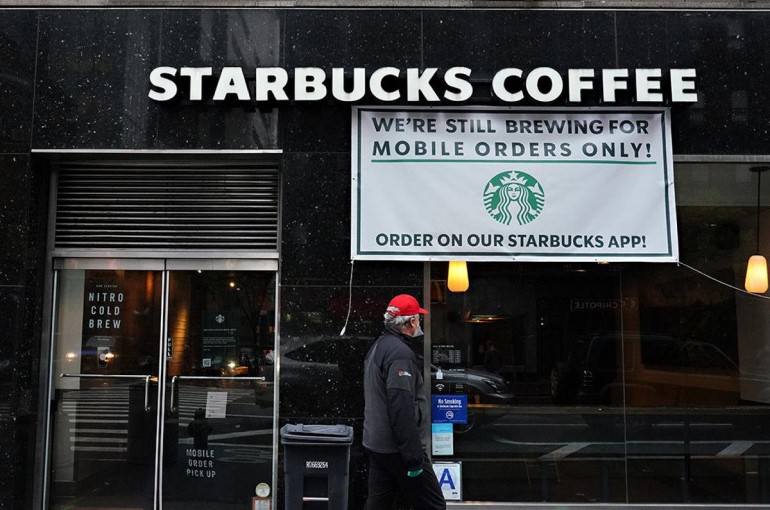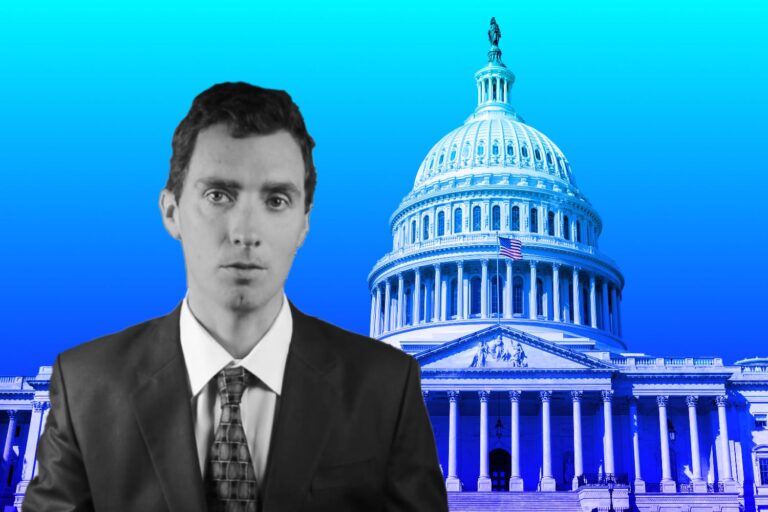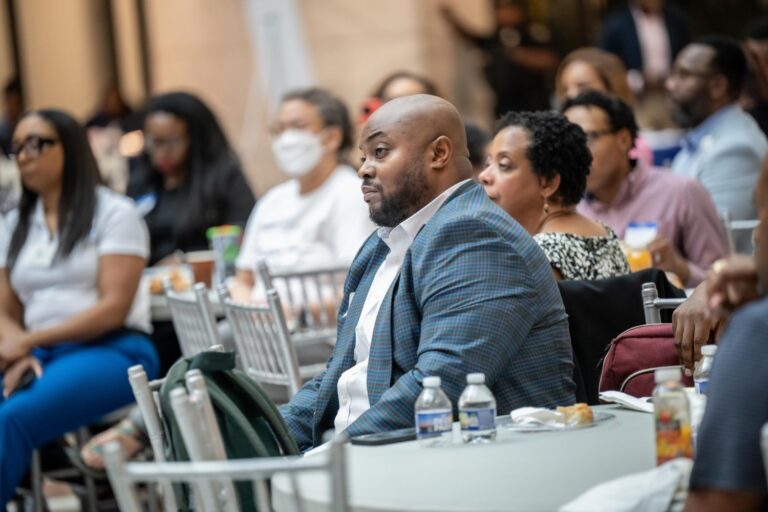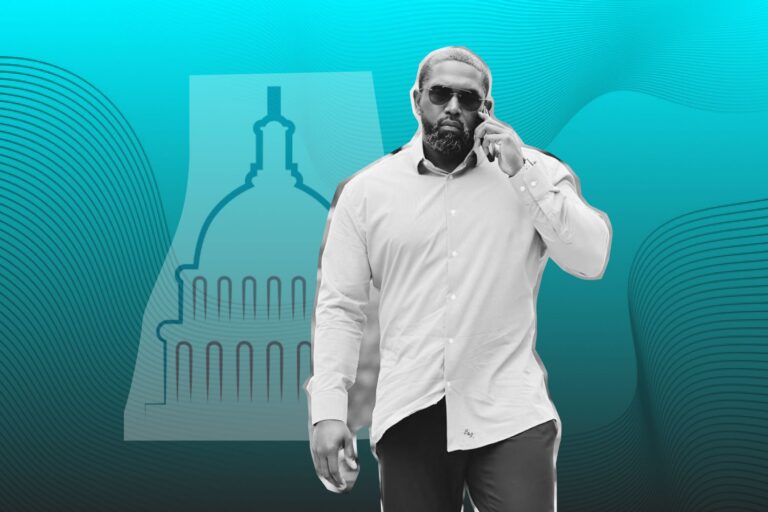Creating Shelter in Crisis by Pivoting the Business Model to Survive or Die Up
COVID-19 has brought about unprecedented economic situations and has caused difficulties for millions of businesses – from family-owned restaurants and niche manufacturers to multinational airlines and tech companies.
Amid the coronavirus, the businesses of all sizes have to reexamine their business models and adapt quickly to an erratic changing market. Entrepreneurs are now coped with the cumbersome challenges of identifying business opportunities that are valuable enough for customers to purchase despite facing a public health and economic crisis. On the other hand, entrepreneurs must be motivated enough to both act on the opportunity and to acquire the resources needed to fulfill it.
When the economy slowly reopens across the country, old ways of doing things clearly will not work for most business operations. Major economic disruptions may provide opportunities for managers and owners who can reject the status quo and shifting away in whole or in part from a company’s typical business model towards a new model, customer base, or goods or services. Over the short run, businesses that pivot in a timely manner may be able to stay afloat until things decisively turn around for the better.
Pivoting a company’s business model is not new concept. It has been an integral part of business innovation for many years. Some of the most profitable and recognizable businesses in the country changed paths midstream before they truly became successful. Other companies pivot proactively when they see opportunities to change the competitive environment and seize an advantage. Pivots generally carry significant risks, but leadership recognizes that the potential benefits outweigh the risks. For companies looking at defensive pivots, it is clear that changing business models is less risky than doing nothing.
The COVID-19 crisis has made it necessary for many companies to transform their business models quickly. Many are repurposing their assets to create new value, protect the brand and survive. One of companies pivoting to redefine its strategy to accommodate to economic downturn during the pandemic is Starbucks.
Starbucks has been a nonpareil brand in coffeehouses for many generations. Throughout the operating years, Starbucks has become a case study in the art of perpetual renewal and has epitomized the arc of reinvention and pivoting to adapt and stay relevant.
Not only big company like Starbucks but it also has small businesses across the U.S pivoting to different business segment and rethinking the shift due to the impacts of the pandemic.
This article will enlighten how a fat-and-happy company like Starbucks and small and medium-sizede businesses mentioned pivot their strategy to keep them sustainable and to ramp up digital opportunities to survive.
Starbucks Creates Shelter in Storm by Pivoting Their Business Model into Survival Strategy
In a letter to stakeholders, Starbucks president and CEO Kevin Johnson and Starbucks chief financial officer Pat Grismer shared more specifics in how the company is augmenting the transformation of the customer and partner experience. The Starbucks leadership team has reexamined the U.S. store footprint with a vision to evolve the Starbucks retail presence over time through targeted store renovations, relocations and new stores and creating a new, elevated experience for partners and customers.
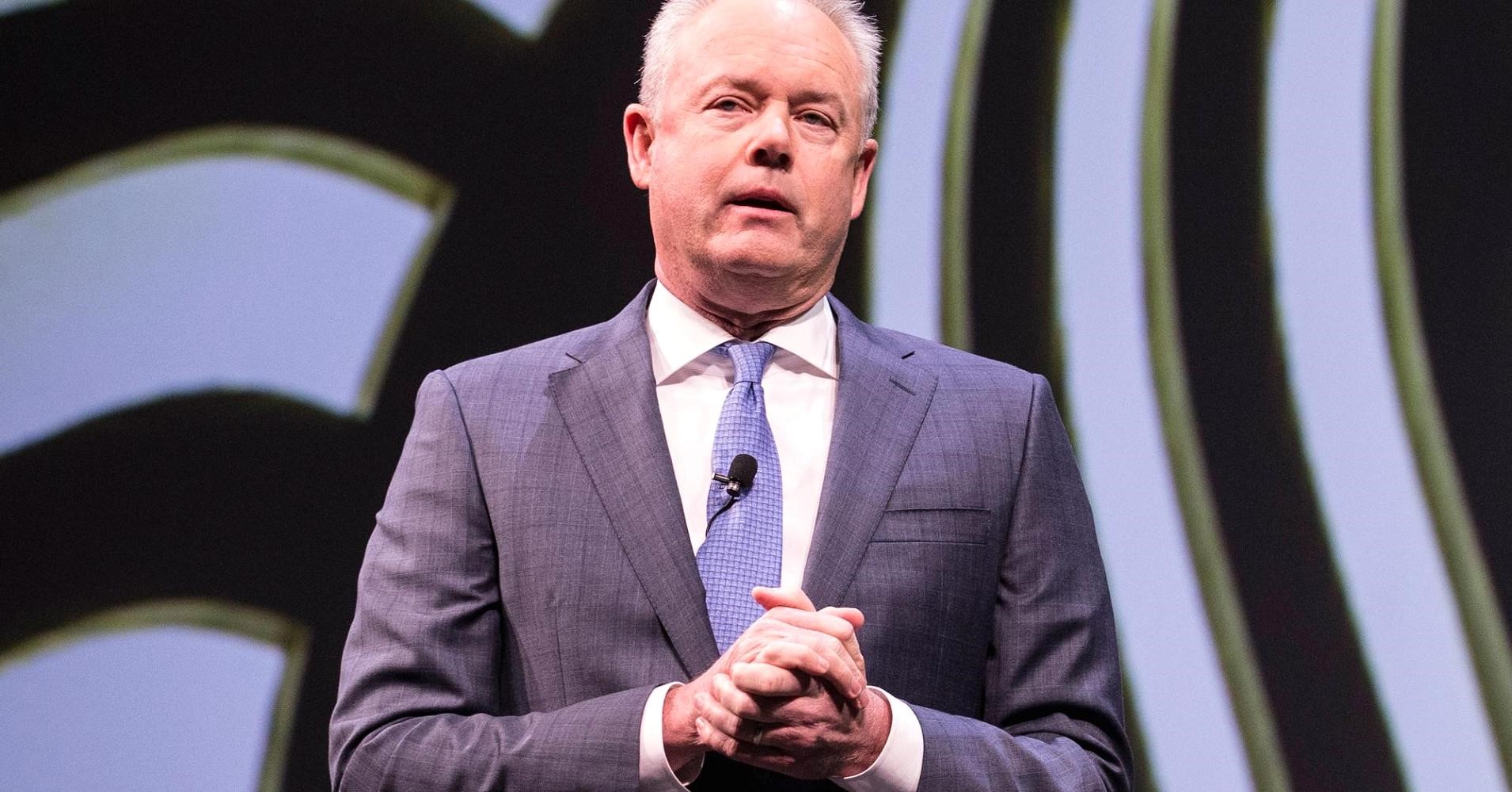
Coffee giant Starbucks has announced plans to close 400 of its stores across the US, and over the next 18 months, it will strengthen digital options in several key areas that it terms convenience-led formats. In favor of convenience-led formats, Starbucks has implemented drive-thru and curbside pick-up options. Even before the pandemic, to-go options accounted for 80% of orders, and current consumer retail trends are reinforcing these habits. Starbucks has 19.4 million rewards members, and furthering the digital transformation is meant to fully engage these members.
Starbucks is pivoting hundreds of North American stores away from the cafe model it helped make ubiquitous and will expand its pickup-only and to-go business — a strategy shift that illustrates how much consumer behavior has changed during the pandemic.
As part of this initiative, Starbucks will be closing about 400 company-owned locations, though USA Today reports that the plan is to open an additional 300 new stores by the end of the year. The brand has about 15,000 U.S. locations, around 60 percent of which are company operated. Starbucks is accelerating plans to convert its shops’ layout to favor of pickup.
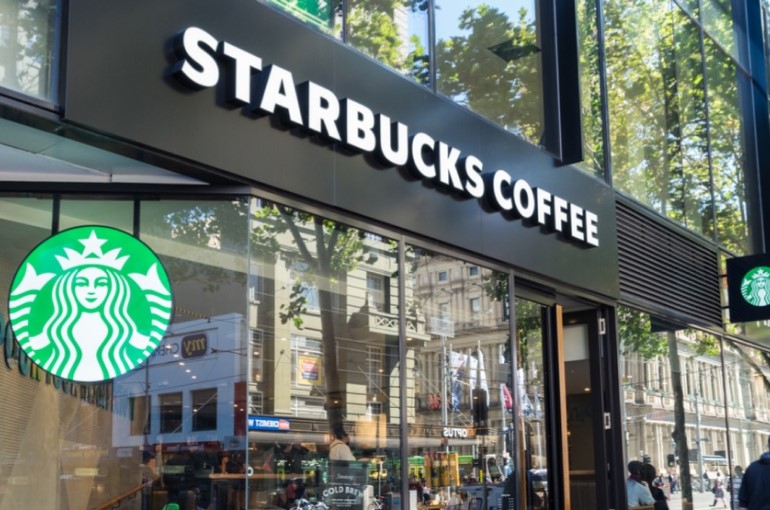
The company says this shift in focus to digital rather than human-led transactions is being accelerated in part due to the changes brought about by Covid-19, as well as to meet the already evolving customer needs of convenience, connection and personalization.
It is a distinct shift for Starbucks. For decades, it positioned itself as a venue for working and socializing. Notwithstanding, many of its shops’ seating area designs makes complying with social distancing guidelines difficult. The closure of its lounges impacted Starbucks’ earnings greatly during the pandemic, the company confirmed in its Q2 report in late April, with same-store sales falling by 10 percent.
Starbucks has long pushed its value as a third place – a spot other than home and the office where people can congregate. But due to the COVID-19 pandemic, many Americans are not even leaving their home. Currently, as the chain continues to reopen across the country, Starbucks is making long-term adjustments to reflect this new normal. “As we navigate through the Covid-19 crisis, we are accelerating our store transformation plans to address the realities of the current situation, while still providing a safe, familiar and convenient experience for our customers.” said by Kevin Johnson.
Pickup stores
Whilst Starbucks began experimenting with pickup-only locations over a year ago, it is now positioning them as facilitators of on-the-go experiences. This includes further increasing its UberEATS delivery availability, along with the physical renovation of some store layouts. The remodeling will feature the addition of a dedicated counter for mobile orders at stores with high volume, which is expected to ease crowding among customer and courier pickups. Meanwhile, others are making increased investments in store experiences that limit in-person interactions.
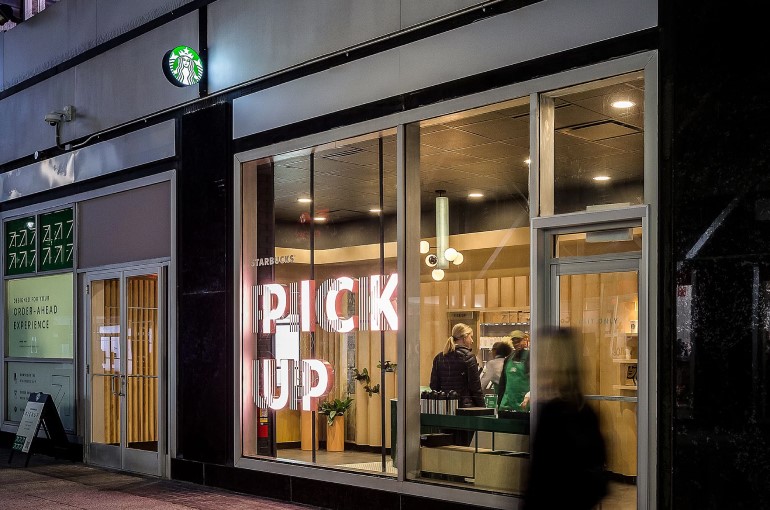
Following strong sales and enthusiastic customer and partner response, the company has committed to the expansion of the Starbucks Pickup store. These locations are intended for customers in dense metropolitan markets looking to order and pay ahead using the Starbucks App on the way to their next destination. The first Pickup store has been operating in Penn Plaza in New York City since November 2019 and soon a second location in New York City will open at 42nd and Park near Grand Central Terminal.
Starbucks investment in mobile orders and its digital rewards program was already paying off pre-pandemic. In February, Starbucks confirmed that its Mobile Order & Pay program first introduced in 2015 has seen an increase in customer adoption. In the first quarter of this year, Starbucks mobile orders accounted for approximately 17 percent of transactions in the U.S., according to its earnings — up 16 percent year-over-year, reaching 18.9 million active U.S. members. It also noted that during peak hours, about 5,400 stores had been seeing over 20 percent of transactions come in via mobile order.
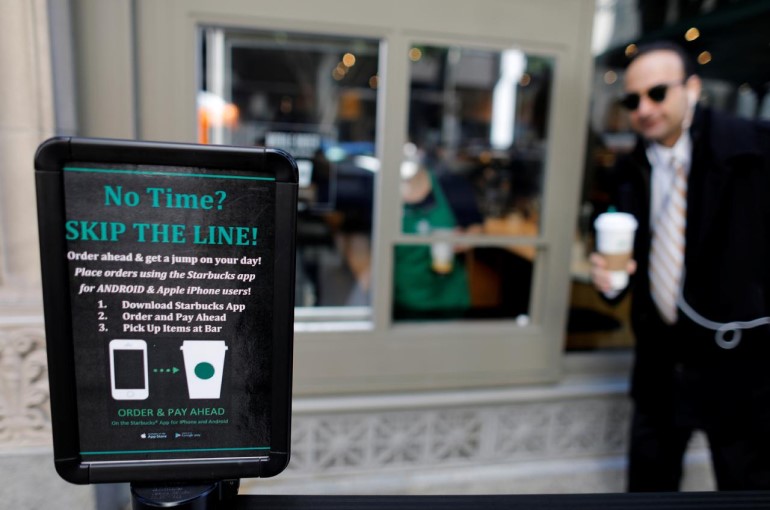
The new Pickup locations go a step further than those that already integrate digital order pickups. Not only will the retrofitted stores not allow seating, but customers will only be able to purchase items by placing orders through the Starbucks or Uber Eats app. At select locations where social distancing can be implemented, stores will offer grab-and-go. Drive-thrus remain open to serve customers and additional delivery locations are now available through Starbucks Delivers via Uber Eats. To find a store in the vicinity of your neighborhood, visit the store locator on Starbucks.com or the Starbucks App for locations and hours.
According to Deloitte’s latest research on physical retail’s transformation, the move away from dine-in points to retail locations turning into mini-fulfillment centers and pickup points.
Starbucks going all in on pickup could inspire other chains to transform their locations to better suit new consumer behaviors. It may also spur more digital innovation for contactless technologies. Earlier this year, seamless checkout gained more traction with 7-Eleven beginning tests of its own cashier less store format
Supported by the Starbucks App, customers at the new Starbucks Pickup locations will be able to order and pay ahead, benefiting and adding to the company’s 19.4 million Starbucks Rewards members.
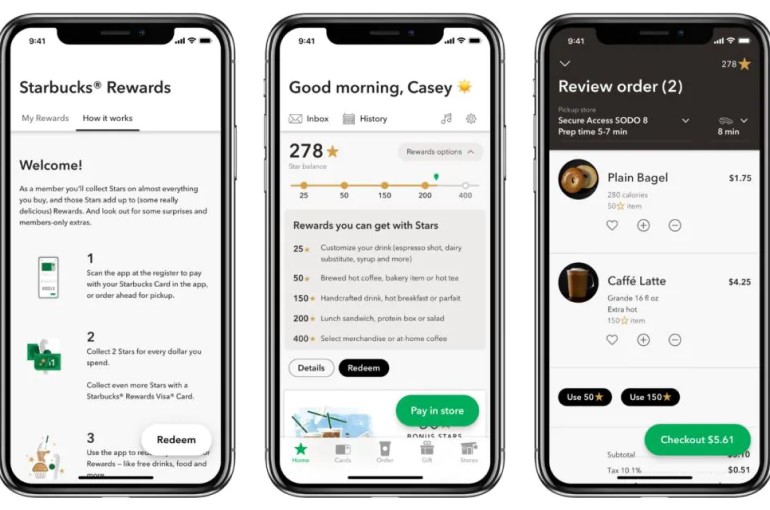
Curbside pickup
Starbucks curbside pickup, a new pilot program that one location in Snoqualmie, Washington, has made the ordering process more seamless than ever before. The program asks for customers to place their orders via the Starbucks app before arriving at the location. Once they pay for their drinks, customers can request curbside pickup from one of the shop’s baristas without even needing to get out of their car. Were it not for the physical coffee handoff, the entire process would not even require human contact.
So far, the Starbucks curbside pickup option has been a hit with would-be customers across the country. A curbside pickup option has allowed customers to get in and out faster than if they were required to wait in store—even if they used Starbucks’ order and pay options that would let them jump the line in order to get their hands on a pink drink.
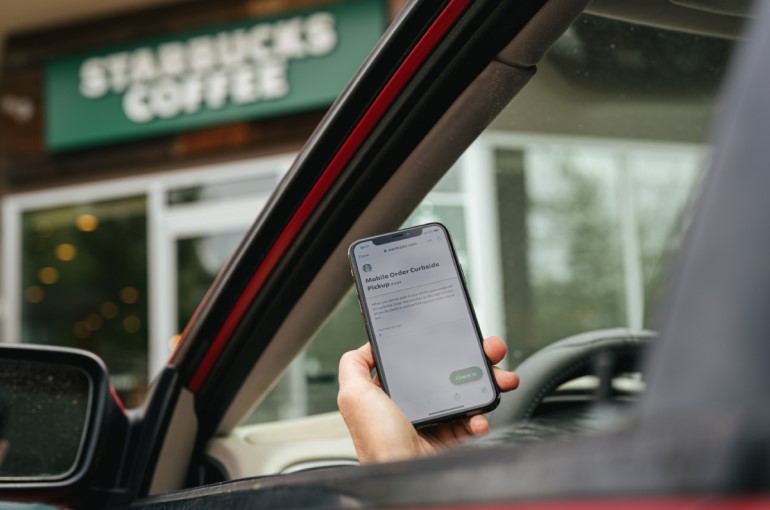
The Starbucks curbside pickup operation is a convenient option for on-the-go coffee drinkers, but it takes a fair bit of coordination for the shop to pull it all off. Customers can not just park anywhere and expect a barista to come out on rollerblades like they are running some kind of 21st-century carhop. The shop had to set up a designated parking area for curbside pickups so that the operation runs smoothly.
Curbside pickup is an experience accelerated due to the COVID-19 crisis as well as customers’ increasing need for convenience in on-the-go occasions. Over the coming months, Starbucks will increase the number of stores that offer Curbside pickup as well as pilot a select number of locations to exclusively offer this format.
Drive-thru
Prior to the nationwide lockdowns prompted by the COVID-19 pandemic, Starbucks was on a path to add more drive-thru locations to its portfolio within the next three to five years.
Simply put, companies with a heavy drive-thru footprint have fared significantly better than those without—both because of the stay-at-home orders and because of the perceived safety of the channel.
The drive-thru is Starbucks original on-the-go experience. The company plans to continue to expand and enhance the drive-thru for customers including opening new locations outside of densely populated cities and in new markets. The company will also design new experiences that could include double lane drive-thru, or drive-thru plus curbside pickup, all of which would leverage the ordering and payment capabilities of the Starbucks App.
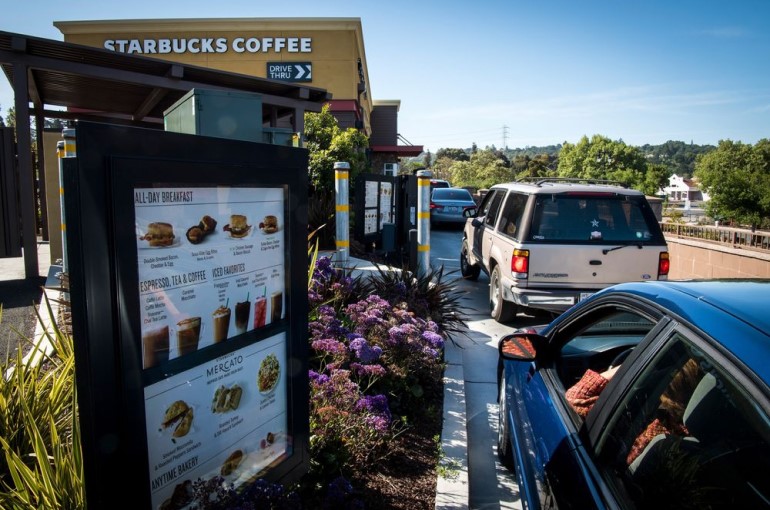
All of these options are meant to offer users the best customer experience as they lean into digital, allowing Starbucks to enhance its customer-centric approach even with limited dine-in capabilities.
In addition, Starbucks is committed to caring for the health and well-being of our partners and customers and playing a constructive role in supporting local health officials and government leaders.
Well on its way in repositioning its business model and working to recover its business, Starbucks has introduced a summer-inspired menu and began a multi-faceted advertising campaign designed to help customers find a store near them, check store hours, order ahead and use contactless payment.
As Starbucks partners return to their stores this week and begin the process of re-opening responsibly, Starbucks CEO Kevin Johnson shared a letter detailing the various experiences customers can expect under modified operations, including heightened safety protocols.
Lesson for Small Business Owners: Big Brands can Pivot in a Month, then Your Business Should Only Take a Week!
As a new normal start to settle in, business owners have been left at the wheel of reinventing how they connect with their communities and customers. For some brands this has meant an emphasis on content creation, for others it has meant a reinvention of entire business models.
For many small and medium-sized businesses, which comprise 47 percent of private-sector payrolls in the U.S., according to the Small Business and Entrepreneurship Council, the sudden economic downturn has created a full-blown crisis.
The big-picture concern shared by economists is if businesses do not survive, many Americans have jobs to return to post COVID-19 pandemic. Currently, restaurants, street vendors and fitness studios and more are quickly adapting to the new scenario of the volatility, pivoting to bringing parts of their business online, connecting with communities directly on social media or launching creative side hustles.
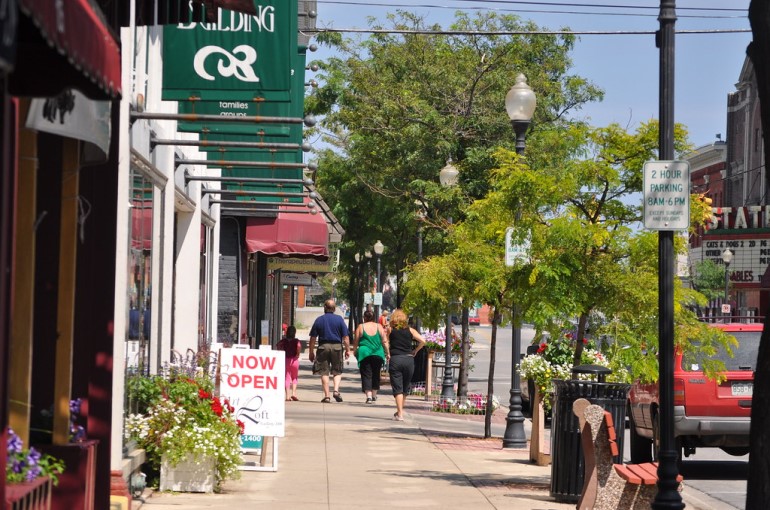
Pivots to new business models in times of crisis are nothing new. It is unclear which of today’s pivots are likely to be lasting. Nevertheless, small and medium-sized companies suffering from the current uncertainty, pivoting may be an imperative if the downturn drags on. Governments and banks are stepping in and trying to provide small-business loans to help these companies outlast and remain relevant. However, this might be the time for the small businesses to take a hard look at themselves and assess potential ways forward after the crisis. In many cases, pivoting might be the answer.
Starbucks is hardly alone. A number of small and medium-sized companies have pivoted or redefined their business models, either to survive the pandemic-driven economic collapse or to give back to their communities—or even to capitalize on the current crisis.
Here are some startups are pivoting their approach in a time of recession to serve their customers and survive for longer.
Majestic Repertory Theatre
Since arriving in Sin City, Troy Heard has worked in local theater. To dedicate to combining traditional storytelling with cutting edge immersive and interactive technologies, he has founded and serves as the artistic director of the Majestic Repertory Theatre, a nonprofit organization, off-Strip venue whose mission is to find in Las Vegas the voices that will change American Theatre. Majestic Repertory Theatre was established in the fall of 2016 at ALIOS, an arts space in the Downtown Las Vegas Arts District. To embark on, it embraces immersive theater, which was especially reflected in a recent production called “The Garden Party.”
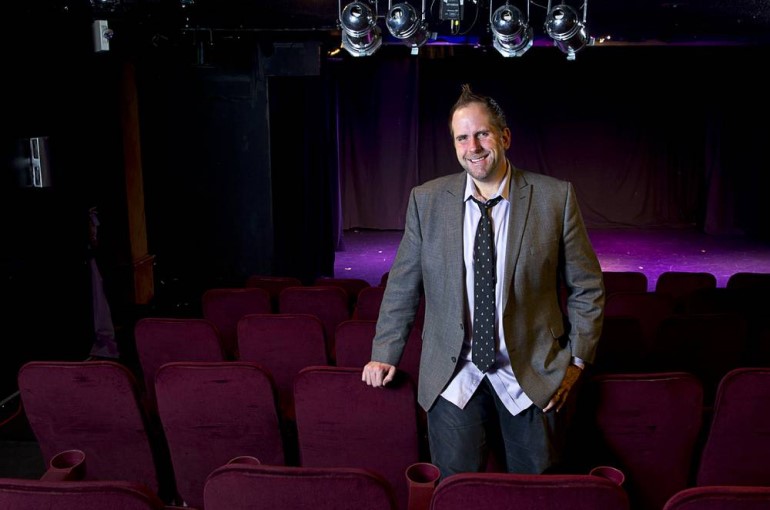
Heard says audience members could even experience one-on-one scenes with performers and were given elixirs as part of the performance but notes just how up-close the experience was and the role physical contact could play in the storytelling. But as coronavirus cases began rapidly spreading, Heard pulled the plug.
“We are not going to be able to have guests walk into this imaginary world and make contact with strangers, knowing that there was this virus,” said by Heard. “But we are creative types and creative types want to create.”
For starters, one actor from “The Garden Party” who played a reverend gave a “Sunday sermon” on Instagram Live for four weeks. Theater staff also hosted “Ask me anything” events to keep the team active. The theater also has a retail license and has been able to sell merchandise, such as face masks and T-shirts. It was a combination of that, a back alley, and permissible curbside pickup and drive-by burlesque shows — it is Vegas, after all — that inspired Majestic’s game-changing project.
In the Majestic Drive-Thru Theatre, guests enter the “Majestic Decontamination Zone.” Heard and some of the theater’s team donate hazmat suits, goggles, gloves and N95 masks, while local performers are on hand for the frightful fun. As vehicles approach, they get asked a slew of questions about their movement, activities, travel and “Have you made bread?” to play into the pandemic.
“We have a back gate that we covered with plastic. It swings open and there is your show,” Heard says. In this way, audiences would not have to leave their car at all, stay at a safe distance from the performance and do not need masks to protect them from exposure.
“There would literally be distance and glass in between you with the car windows,” he adds, noting this process also helps the performers stay safe by keeping them out of normally crowded backstage areas. Moreover, the back-alley location has spurred ideas for future drive-thrus.
Heard said that these are things they have done to stay relevant and keep those juices flowing, and to engage with their audiences on a level that they have never done before. “I think the fact that we’ve been stepping out of the theater and the different spaces for years now has really helped us move forward during this.” shared by Heard.
MyoMaster
Joe Gray and Lottie Whyte are the founders of MyoMaster. They started this business because they want to help athlete unleash their potential with elite level recovery products. Joe is a professional rugby player and Lottie is a passionate hockey player, runner and gym goer.
In early 2018 Joe developed achilleas tendonitis, during his lay-off from training he dismantled a drill, welded on a stool leg and developed a massage gun and used it to treat his achilleas. Designing the first massage gun and watching the difference it was making to users’ bodies prompted Lottie to start thinking about the role of recovery in sports performance and the products and knowledge that existed for the everyday athlete. Joe and Lottie quickly learnt two things, one – that most people are not making the time for recovery and two – that the products that are out there were incredibly expensive. In the end, MyoMaster was launched.
Before the crisis hit all their revenue was generated at sporting events and from selling into gyms. When COVID-19 forced the cancellation of all these events and the closure of gyms the couple feared they would have to close the business and were preparing to have tough conversations with their small team. Then they saw the space open up around at home workouts, and in the space of a fortnight, pivoted to become an ecommerce business.
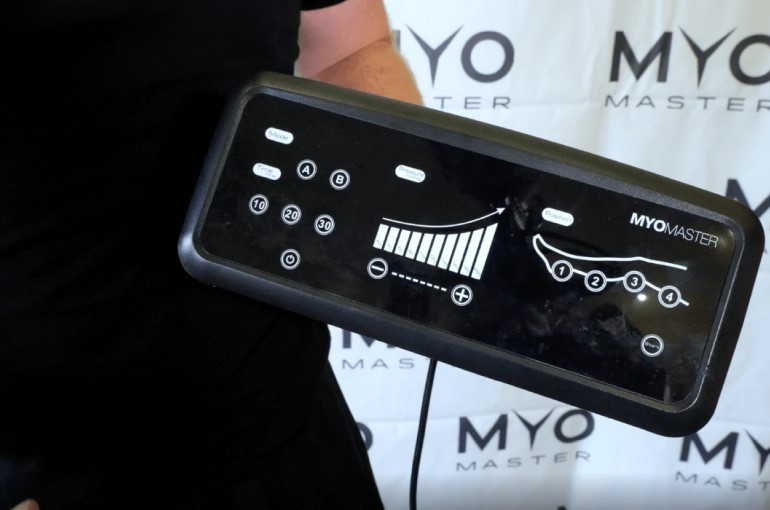
They had everyone in the team focusing on updating their website, finding influencers, creating content, and finding out how to do digital advertising. They have all been up late doing online courses and learning as they go, and they have launched created an online store.
The founders invested USD 2,000 in digital advertising spend, taking advantage of the currently low cost of ads as bigger brands pulled their spend and their big marketing campaigns, creating opportunities for smaller brands to increase their visibility.
“What we used to sell in a month, we are now selling online in a single day,” said by Whyte. “There are real opportunities out there for brands that can sell online and provide people with products that can bring them joy at home.”
Red Bay Coffee
Keba Konte has his career as a renowned visual artist to thank for his entry into the coffee business. He bought a cafe in Berkeley, California, in order to showcase his artwork.
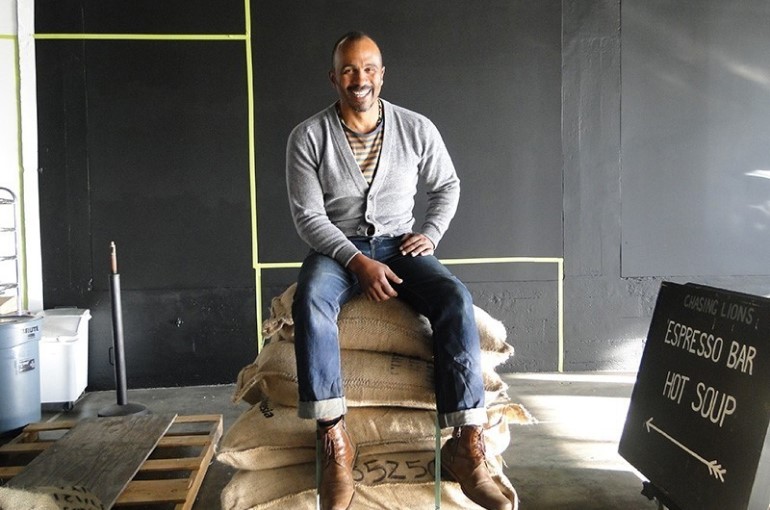
But as he learned more about coffee, he has become obsessed with it, and found that the pursuit of the perfect blend complemented the international travel he was doing as an artist and photojournalist. Years later, he launched Red Bay Coffee in 2014.
Red Bay Coffee is at the forefront of what he believes is the fourth wave of coffee—a firm commitment to ensure coffee production is not only high quality and sustainable, but a vehicle for diversity, inclusion, social and economic restoration, entrepreneurship, and environmental sustainability.
Red Bay seeks to create unity by hiring and serving people of all backgrounds, striving to be diverse and inclusive of those who have traditionally been left out of the specialty coffee industry, especially people of color, the formerly incarcerated, women and people with disabilities.
“Our key differentiator,” he says, “is that we have a social mission to make coffee, and specialty coffee in particular, more inclusive and accessible to more people.”
Red Bay Coffee is a certified B Corporation, which means that the business balances purpose and profit, and commits to practices that take into consideration impacts on the environment, the community and more.
It embraces being in Oakland, California, by featuring vibrant art and performance space, celebrating activism — Oakland is where the Black Panther Party was formed — and serving the tech sector that is found throughout the Bay Area.
In fact, businesses within that industry were among those who served Red Bay Coffee offerings in their offices before COVID-19 drove many to work from home. But then, Konte’s e-commerce started to take off, as fans began placing orders so they could roast java at home. And, prior to the coronavirus outbreak, Konte had invested in a “small fleet,” which includes a Mercedes Sprinter van that is a full-service espresso bar, allowing Red Bay Coffee to commute around the region to reach customers.
“Our business is a very dynamic creature,” shared by Konte. “We have multiple channels, and as some channels came to a screeching halt, other channels rose to the occasion.”
The Bottom Line
The coronavirus pandemic has brought the U.S economy to its knees. Experience managing a tight cash flow in both good and challenging times has forced small and medium-sized businesses and startups to learn when and how to quickly pivot when plans do not pan out as expected. In a time of crisis, not only long-established companies but it also has startups doing differently in the face of the current volatility and ambiguity. These corporation like Starbucks and small businesses mentioned above are valuable lessons as well as convincing urgency for struggling companies to change their business models and ride the waves of growth post-pandemic.

